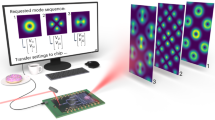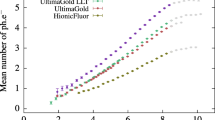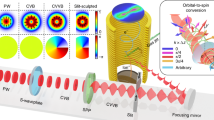Abstract
ON page 543 of vol. III. of the “Dictionary of Applied Physics”, an experimental arrangement is described where the stroboscope disc is illuminated by an intermittent light, using a neon-tube, an induction coil, and an electromagnetically controlled tuning-fork. The same experiment can be performed in the light of an ordinary neon filled 110-volt Osglim lamp to which current is supplied from an alternating-current lighting circuit. If the laboratory supply is of continuous current, then the arrangement can be considerably improved with the use of a rotary convertor the speed of which can be regulated so that the frequency of the intermittent light can be ascertained directly with a speedometer and stopwatch. As a demonstration experiment this arrangement is particularly convenient, since both the stroboscopic disc and the frequency of the source of light can be varied at will, and very interesting effects may be observed.
This is a preview of subscription content, access via your institution
Access options
Subscribe to this journal
Receive 51 print issues and online access
$199.00 per year
only $3.90 per issue
Buy this article
- Purchase on SpringerLink
- Instant access to full article PDF
Prices may be subject to local taxes which are calculated during checkout
Similar content being viewed by others
Author information
Authors and Affiliations
Rights and permissions
About this article
Cite this article
PARANJPÉ, G. An Experiment with a Stroboscope. Nature 115, 265 (1925). https://doi.org/10.1038/115265c0
Issue date:
DOI: https://doi.org/10.1038/115265c0



